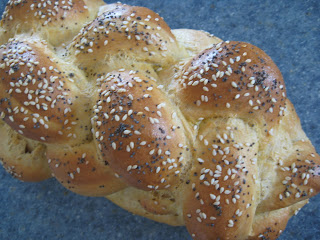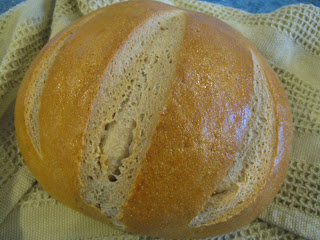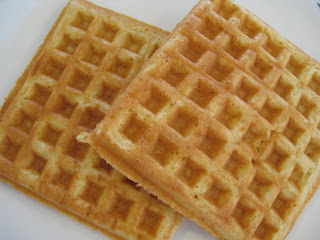Last year, a friend shared this recipe for resurrection cookies. I didn't get a chance to make them, but maybe this year. I'll share it just in case you want to make these with your children.
1 cup whole pecans
1 teaspoon vinegar
3 egg whites
a pinch salt
1 cup sugar
a zipper baggy
1 wooden spoon
scotch tape
Bible
Instructions:
These are to be made the evening before Easter. Preheat oven to 300F. (this is very important --- don't wait until you are half done with the recipe).
Place pecans in zipper baggy and let children beat them with the wooden spoon to break into small pieces. Explain that after Jesus was arrested. He was beaten by the Roman soldiers. Read: John 19:1-3
Let each child smell the vinegar. Put 1 teaspoon vinegar into mixing bowl. Explain that when Jesus was thirsty on the cross He was given vinegar
to drink. Read: John 19:28-30
Add egg whites to vinegar. Eggs represent life. Explain that Jesus gave His life to give us life. Read: John 10:10&11
Sprinkle a little salt into each child's hand. Let them taste it and brush the rest into the bowl. Explain that this represents the salty tears shed by Jesus' followers, and the bitterness of our own sin. Read: Luke 23:27
So far the ingredients are not very appetizing. Add 1 cup sugar. Explain that the sweetest part of the story is that Jesus died because He loves us. He wants us to know and belong to Him. Read: Psalm 34:8 and John 3:16
Beat with a mixer on high speed for 12 to 15 minutes until stiff peaks are formed. Explain that the color white represents the purity in God's eyes of those whose sins have been cleansed by Jesus. Read: Isaiah 1:18 and John 3:1-3
Fold in broken nuts. Drop by teaspoon onto waxed paper covered cookie sheet. Explain that each mound represents the rocky tomb where Jesus' body was laid. Read: Matthew 27:57-60
Put the cookie sheet in the oven, close the door and turn the oven OFF.
Give each child a piece of tape and seal the oven door. Explain that Jesus' tomb was sealed. Read: Matthew 27:65-66
GO TO BED!
Explain that they may feel sad to leave the cookies in the oven overnight. Jesus' followers were in despair when the tomb was sealed. Read: John 16:20&22
On Resurrection Sunday (Easter) morning, open the oven and give everyone a cookie. Notice the cracked surface and take a bite. The cookies are hollow! On the first Easter Jesus' followers were amazed to find the tomb open and empty. Read: Matthew 28:1-9






















































